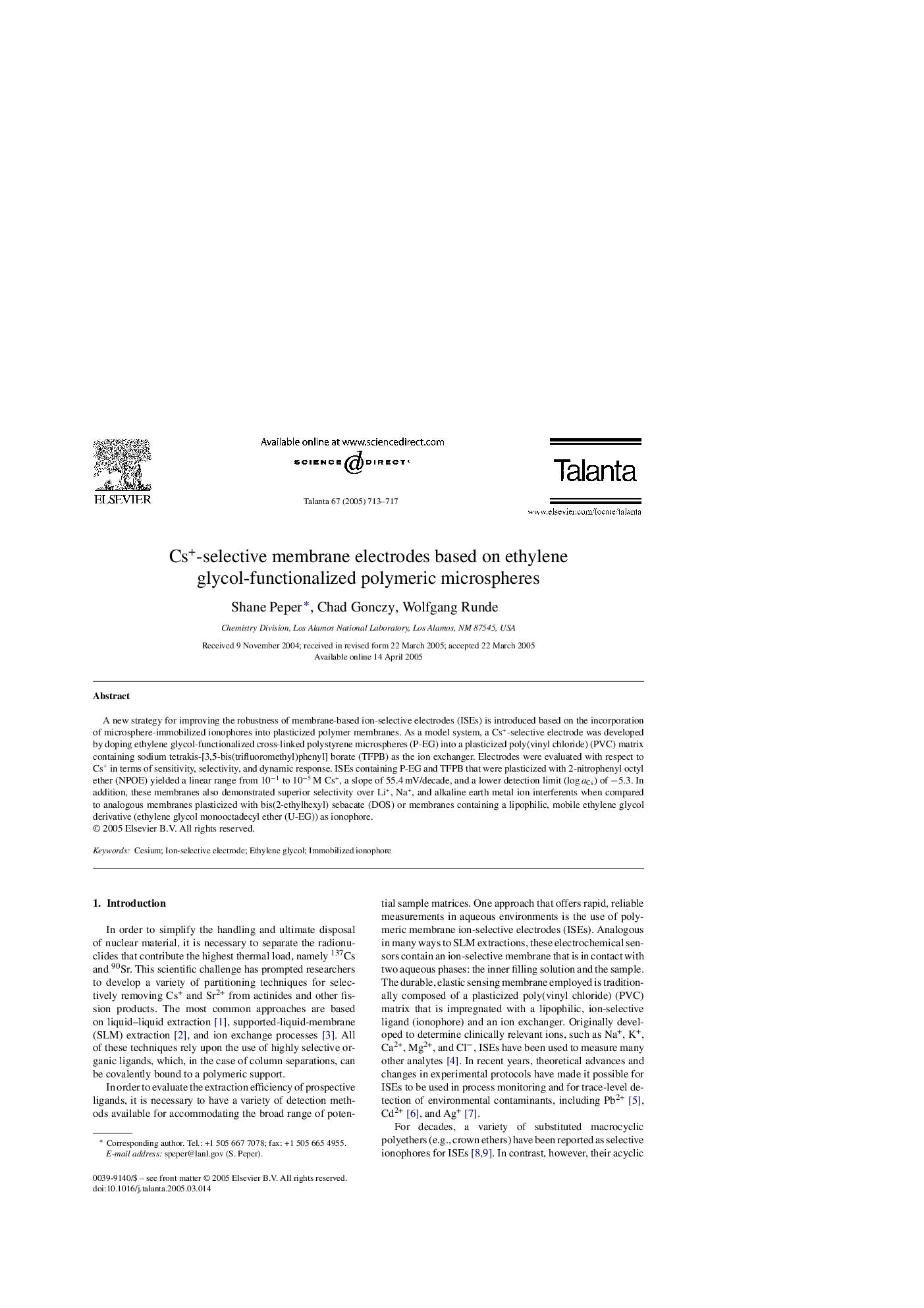| Article ID | Journal | Published Year | Pages | File Type |
|---|---|---|---|---|
| 10561388 | Talanta | 2005 | 5 Pages |
Abstract
A new strategy for improving the robustness of membrane-based ion-selective electrodes (ISEs) is introduced based on the incorporation of microsphere-immobilized ionophores into plasticized polymer membranes. As a model system, a Cs+-selective electrode was developed by doping ethylene glycol-functionalized cross-linked polystyrene microspheres (P-EG) into a plasticized poly(vinyl chloride) (PVC) matrix containing sodium tetrakis-[3,5-bis(trifluoromethyl)phenyl] borate (TFPB) as the ion exchanger. Electrodes were evaluated with respect to Cs+ in terms of sensitivity, selectivity, and dynamic response. ISEs containing P-EG and TFPB that were plasticized with 2-nitrophenyl octyl ether (NPOE) yielded a linear range from 10â1 to 10â5 M Cs+, a slope of 55.4 mV/decade, and a lower detection limit (log aCs) of â5.3. In addition, these membranes also demonstrated superior selectivity over Li+, Na+, and alkaline earth metal ion interferents when compared to analogous membranes plasticized with bis(2-ethylhexyl) sebacate (DOS) or membranes containing a lipophilic, mobile ethylene glycol derivative (ethylene glycol monooctadecyl ether (U-EG)) as ionophore.
Related Topics
Physical Sciences and Engineering
Chemistry
Analytical Chemistry
Authors
Shane Peper, Chad Gonczy, Wolfgang Runde,
